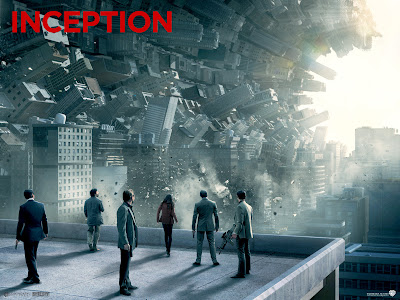Invisible Cities. Just by looking at these two words the idea of what the book may be about comes to mind. The title is ironic because there cannot be an invisible city and it's an allusion to "Emperor's New Clothes". This makes me wonder whether the story will be entertaining with dark humor or if it is a book that teaches us an important lesson. Looking at the table of contents, I realized the answer immediately. All of the cities listed have names like Cities and Memory, Cities and Desires, Cities and Signs, etc. It is clear that the book has a life lesson. Maybe it will help us discover who we really are, just like
The Selfish Gene. The name of each city in the Table of Contents helps us realize the true meaning of the title. The cities are invisible because they are in our mind. There is no other explanation.
While reading the book and analyzing every single word, I realized that the cities are listed in order of importance. City of Memories is the first city listed in the book. This page expreses the fact that we take everything around us for granted. We see everything that surrounds us all the time, so we don't pinpoint the objects in our memory. "...he feels envy toward those who now believe they have once before lived an evening identical to this and who think they were happy, at that time." (page 7) With this last sentence on the page, it seems like Marco Polo is insulting us. It's as if he is saying that we are too blind to realize the beauty and unique city of our memories. Reflecting back on the past, none of the objects around us stand out. I think Diomira is the first city listed in the book because it is the birthplace of all the cities. "...September evening, when the days are growing shorter and the multicolored lamps are lighted all at once at the doors of the food stalls and from a terrace a woman's voice cries ooh!,.."(page 7) September represents the starting of a new year and the woman could be giving birth.
"When a man rides a long time through wild regions he feels the desire for a city." (page 8) Desire is the key word in this sentence to understand that memories are the birthplace of the next city. "Desires are already memories." From that sentence, Polo beings to talk about the first city of Desires. There are two forms in describing desires. The first is that we would like what we do not have. That is why, in this city, the people trade with each other and marry the women from the other sections. Another idea of desire is picking the path that you want to follow in life. After following the chosen path for a certain amount of time, we start to want the other path. We believe that the opportunities may have been better and that the path we chose was a waste of time.
The past is a very important detail in
Invisible Cities. The past affects how we see the future and the present. It affects our desires, memories, and the different signs we see in life. Depending on what our past has been like, we create our own world. The world that was never given to us and therefore desire. It is made up of positive memories and things that we wish had happened. In section four of Cities and Memory, I interpreted that memories are altered, contain secrets, and unusual things happen in our memories. This reminded me immediately of the movie
Inception. The main character creates his own world of his desires. Unusual things happen like the moving of buildings, moving of the city, dead people being alive, etc. It explains the relationship between memories and desires perfectly.
In the end of the chapter, Khan has an interesting conversation with Marco Polo.
"...shall I be able to possess my empire, at last?"
and the venetian answered: "Sire, do not believe it. On that day you will be an emblem among emblems."
After reading this dialogue between the characters a couple of times, I realized the true meaning behind the conversation. Many times we ask ourselves:
"When will we understand everything and know that we are wise and contain a lot of knowledge?"
I have asked myself many times in difficult subjects in school like math. The truth is, we will never realize the knowledge we have conquered and possess. We live by it so it has become a part of us. We create our experiences, and we learn from them. We are already full of knowledge, we just have not realized it yet.
 That passage supported even more my idea of thin cities representing anorexia. The women were obsessed with themselves. Isn't that the main reason why anorexia exists? I was so excited that I had understood this type of city until BAM! The rest of the page completely threw me off.
That passage supported even more my idea of thin cities representing anorexia. The women were obsessed with themselves. Isn't that the main reason why anorexia exists? I was so excited that I had understood this type of city until BAM! The rest of the page completely threw me off. 









